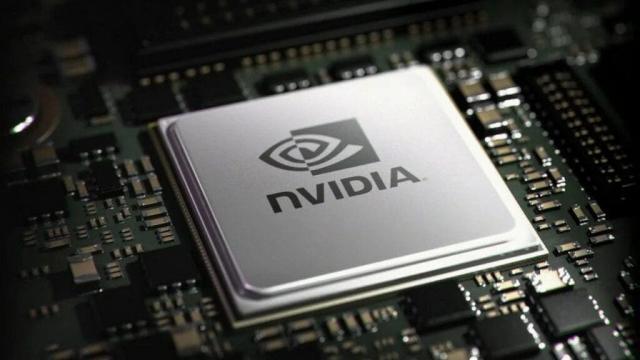In recent years, Nvidia Corporation has become synonymous with high-performance graphics processing units (GPUs), driving advances in gaming, artificial intelligence (AI), and data center operations. However, as the semiconductor industry continues to evolve, Nvidia is facing a phenomenon known as “deflation,” marked by a notable decline in its product prices. This article delves into the factors driving Nvidia’s deflation, the implications for the company and its stakeholders, and the broader impact on the semiconductor industry.
1. The Dynamics of Deflation in the Semiconductor Sector
Deflation in the semiconductor industry refers to a decrease in the prices of semiconductor products, including GPUs, memory chips, and other critical components. This deflation can be driven by several factors:
- Technological Advancements: As technology progresses, newer, more efficient, and higher-performing semiconductor products are developed. These advancements often lead to the reduction of prices for older models, making way for the latest innovations.
- Increased Competition: The semiconductor market is highly competitive, with numerous players constantly innovating and releasing new products. This competition can drive prices down as companies vie for market share.
- Economies of Scale: As production volumes increase, semiconductor manufacturers can achieve economies of scale, reducing production costs per unit and passing on these savings to consumers through lower prices.
- Market Saturation: When the market becomes saturated with a particular type of semiconductor product, prices may fall due to an oversupply, as companies attempt to clear inventory and maintain sales volumes.
2. Nvidia’s Price Adjustments: Causes and Consequences
Nvidia’s deflationary trend can be attributed to several interrelated factors:
- Technological Leapfrogging: Nvidia has a history of pushing the envelope in GPU technology, with frequent releases of new architectures and models. For instance, the transition from the Pascal architecture to the Turing and then to the Ampere architecture brought significant performance improvements. As newer GPUs become available, older models naturally see price reductions to make room for the latest technology.
- Competitive Pressure: The rise of competitors such as AMD (Advanced Micro Devices) and Intel in the GPU and semiconductor space has intensified competition. AMD’s recent advancements in its Radeon GPU lineup and Intel’s entry into discrete graphics cards have created pricing pressure on Nvidia to remain competitive.
- Supply Chain Dynamics: The semiconductor supply chain is complex and susceptible to fluctuations. Issues such as supply chain disruptions, raw material shortages, and production bottlenecks can affect pricing. Nvidia, like other semiconductor manufacturers, has had to adjust its pricing strategies in response to these dynamics.
- Consumer Demand Shifts: Shifts in consumer demand, particularly in sectors like gaming and cryptocurrency mining, can influence Nvidia’s pricing strategy. For instance, the surge in demand for GPUs driven by cryptocurrency mining led to supply constraints and inflated prices, which have since normalized as demand fluctuated.
3. Impact on Nvidia’s Financial Performance
The deflationary trend has several implications for Nvidia’s financial performance:
- Revenue and Profit Margins: Lower prices can impact Nvidia’s revenue and profit margins, especially if the company experiences a decline in average selling prices (ASPs) for its products. However, Nvidia’s ability to innovate and release high-demand products can mitigate this impact by driving volume sales.
- Market Position and Share: Deflation can influence Nvidia’s market share and competitive positioning. While lower prices can attract price-sensitive customers and expand market share, they can also erode margins. Nvidia’s strategy to balance pricing with product innovation helps maintain its competitive edge.
- Investor Perception: Price adjustments and their impact on financial performance can affect investor perception and stock valuation. Investors closely monitor Nvidia’s ability to navigate deflationary pressures while continuing to deliver growth and profitability.
4. Strategic Responses and Future Outlook
In response to deflationary pressures, Nvidia has employed several strategic measures:
- Product Differentiation: Nvidia continues to focus on differentiating its products through technological innovation, including advancements in AI, ray tracing, and machine learning capabilities. By offering cutting-edge features and performance, Nvidia aims to justify higher price points for its premium products.
- Diversification: Nvidia’s diversification into various segments, including data centers, automotive technologies, and AI research, helps mitigate the impact of deflation in any single market. This diversification allows Nvidia to leverage growth opportunities across different sectors.
- Cost Management: Nvidia is actively working to manage costs through improvements in supply chain efficiency, manufacturing processes, and operational scalability. Effective cost management helps the company maintain profitability even as prices decline.
5. Broader Implications for the Semiconductor Industry
Nvidia’s deflationary trend reflects broader patterns in the semiconductor industry:
- Innovation Cycles: The semiconductor industry is characterized by rapid innovation cycles, leading to frequent introductions of new technologies and subsequent price reductions for older products. This dynamic drives both technological advancement and pricing adjustments.
- Competitive Landscape: Deflation highlights the competitive nature of the semiconductor market, where companies continuously strive to outperform each other in terms of performance, efficiency, and cost-effectiveness.
- Consumer Impact: Lower semiconductor prices can benefit consumers through more affordable and accessible technology. As prices decrease, consumers gain access to advanced products at lower costs, which can drive adoption and market growth.
Disclaimer: The thoughts and opinions stated in this article are solely those of the author and do not necessarily reflect the views or positions of any entities represented and we recommend referring to more recent and reliable sources for up-to-date information.









